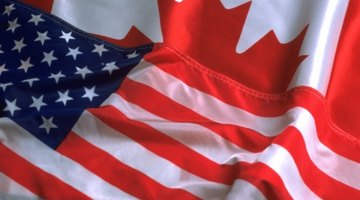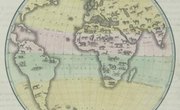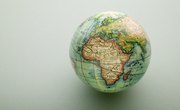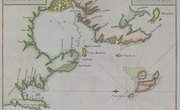Ninety percent of Canada's 33 million residents live within 100 miles of the United States border, so it is a reasonable conclusion that the two countries share many cultural similarities. In spite of this, Canada, as its own country, enjoys its own culture independent of the United States. Several key differences exist between the two in terms of language, religion, politics and social norms.
Language
Canada has two official languages: English, which is spoken across the country and is, according to Statistics Canada's 2006 census, the primary language of approximately 66 percent of the population, and French, spoken predominantly in Quebec by about 21 percent of Canada's total population. The United States has no official language, but according to the Census Bureau's 2006 census, English is the de facto language nationwide and is spoken by about 80 percent of the population. Written English in Canada and the U.S. differs: Canadians use British spellings of words such as "color" (colour), "center" (centre), "humor" (humour) and "theater" (theatre).
Religion
Unlike the United States, where 51 percent of the population identifies as Protestant Christian, according to the 2007 CIA World Fact Book, Canada has no majority religion. According to Statistics Canada in 2001, 42 percent of Canadians identify as Roman Catholics, followed by 23 percent who are Protestant. The United States' heavy Christian leanings influence much of its cultural and political landscape while Canada has no such dominant religious force. Four percent of Americans, as of 2007, subscribe to no religion, while the same is true of 16 percent of Canadians.
Politics
The most noticeable difference between Canadian and American politics is the head of state: America is led by a president while Canada, like many other Commonwealth countries has a prime minister. Canada also has a governor general, who acts as the ruling British monarch's representative, though the position is largely symbolic and Canada is entirely self-governing. While the United States has two political parties, Canada has four major and multiple minor ones: Conservative, who won a majority government in 2011 after forming minorities since 2005; Liberal; New Democratic Party, which formed the official opposition after the 2011 federal election for the first time in history; Bloc Quebecois, a separatist party that run solely in Quebec; and the Green Party, which won its first federal seat in Parliament in 2011.
Social Factors
Canada is heavily influenced by American popular culture. U.S. TV shows, music and movies are widely consumed across Canada, to the point that Canadian cultural products are protected and funded by the government. At least 30 percent of broadcasts on Canadian TV and radio stations must be Canadian content to avoid the U.S. entertainment industry from wiping out Canada's. Additionally, Canada has many socially liberal institutions, including full marriage rights for same-sex couples, universal health care, and the absence of the death penalty.
Related Articles
References
Writer Bio
Jennifer Reynolds is a professional writer covering crafting, electronics and entertainment topics. She graduated in 2010 with a Bachelor of Arts in professional writing from York University.











